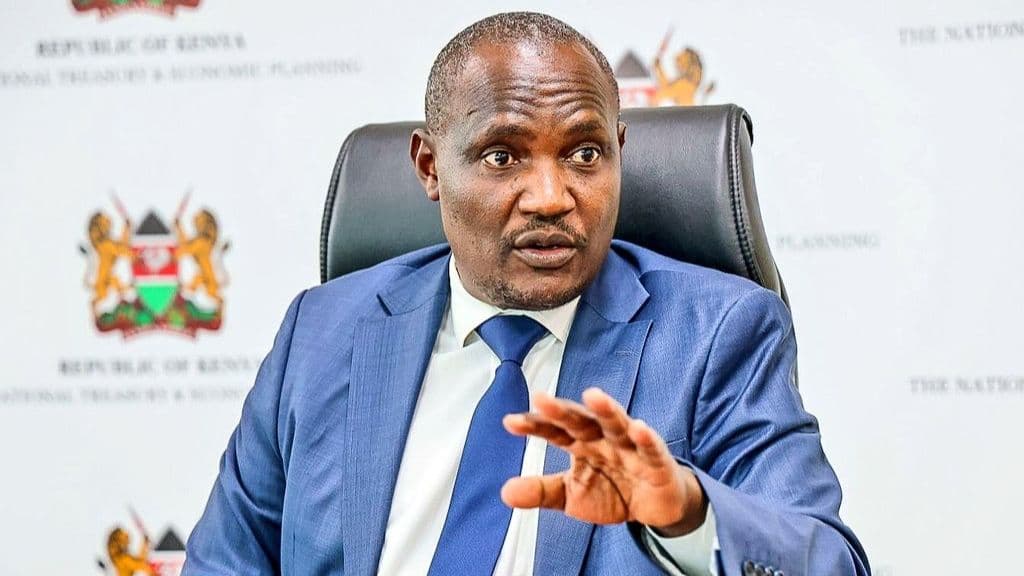We're loading the full news article for you. This includes the article content, images, author information, and related articles.
Treasury Cabinet Secretary John Mbadi asserts the Kenyan shilling's true value is stronger than its current rate, directly challenging the International Monetary Fund's warnings about the currency's 'excessive stability' and setting the stage for a policy divergence.

NAIROBI, KENYA – The National Treasury has publicly declared the Kenyan shilling undervalued, creating a direct collision with the International Monetary Fund (IMF), which has repeatedly flagged concerns over the currency's prolonged and 'excessively stable' behaviour. In a press briefing on Tuesday, November 4, 2025, Treasury Cabinet Secretary John Mbadi stated that the shilling's fair market value could be as strong as KSh 118 to the US dollar if allowed to float freely, a significant deviation from its current trading band.
"The stability of the shilling has a basis. If it were just allowed to float freely, it would even trade at 118 to the dollar," Mbadi remarked, suggesting a deliberate state preference for a weaker shilling to support the economy. This admission confirms suspicions that authorities are managing the currency's value, a practice that contradicts the IMF's long-standing recommendation for a market-driven exchange rate.
For most of 2025, the shilling has remained tightly anchored, trading in a narrow range of approximately KSh 129.22 to KSh 129.24 against the US dollar. This lack of volatility has been a point of contention for the IMF. During a mission to Nairobi that concluded on October 9, 2025, the Fund described the shilling's performance as "unusually stable given global currency movements" and inconsistent with prevailing economic shifts, such as a weaker US dollar globally in 2025. The IMF has argued that this stability interferes with monetary policy transmission and inflation targeting.
CS Mbadi defended the shilling's stability, attributing it to strong macroeconomic fundamentals. He cited an improving current account balance, better export performance, and robust diaspora remittances as key pillars of support. "Our current account balance has been improving. Our exports are doing better," he stated.
However, recent data presents a mixed picture. While diaspora remittances have shown strong growth, reaching a record US$2.10 billion in the first five months of 2025, a 14% increase from the same period in 2024, export earnings have faltered. Data from the Kenya National Bureau of Statistics (KNBS) indicated that total exports fell by 3.06% to KSh 554.08 billion in the first half of 2025, the first such decline in six years, largely due to a drop in tea sales. This resulted in a widening of the goods trade deficit to KSh 783.91 billion.
The Central Bank of Kenya (CBK) maintains that it operates a flexible exchange rate policy and only intervenes to smooth out volatility. Yet, the Treasury's recent statements suggest a more hands-on approach. In March 2025, CS Mbadi told a parliamentary committee that the government could not allow the shilling to appreciate too much, stating that a rate of around KSh 130 was "most reasonable for our economy" to avoid discouraging exports.
The divergence between the Treasury and the IMF carries significant implications for Kenya. A managed, weaker shilling makes Kenyan exports cheaper and more competitive globally, potentially boosting foreign currency earnings. It also increases the shilling value of diaspora remittances. Conversely, it raises the cost of imports, including essential goods like fuel, machinery, and food, which can fuel inflation and hurt consumers.
A stronger, market-driven shilling, as the IMF advocates, would lower import costs and ease inflationary pressures. It would also reduce the burden of servicing Kenya's foreign-denominated debt. CS Mbadi himself acknowledged in March 2025 that the shilling's appreciation at that time had reduced the country's external debt by KSh 1 trillion.
The IMF's primary concern is that defending a specific exchange rate can deplete a country's foreign exchange reserves, jeopardizing its ability to pay for imports and service external debt. While Kenya's reserves are currently robust, standing at approximately US$12.1 billion (or 5.3 months of import cover) as of late October 2025, sustained intervention could prove costly.
The debate over Kenya's currency management comes amid a challenging global economic environment. The World Bank has revised Kenya's 2025 economic growth forecast downward to 4.5% from a previous 5%, citing fiscal pressures and high interest rates. The government's stance on the shilling appears to be part of a broader strategy to navigate these headwinds by protecting its export sector.
This policy clash is critical as Kenya negotiates a new loan programme with the IMF, after its previous multi-year arrangement expired. The Fund's view on the exchange rate will likely be a central issue in these discussions. As Nairobi balances the need for external financing with its domestic economic priorities, the future direction of the Kenyan shilling remains a key indicator of the country's policy trajectory and its relationship with international financial institutions. Further investigation is required to ascertain the full extent of the CBK's market interventions and their long-term impact on the economy.
Keep the conversation in one place—threads here stay linked to the story and in the forums.
Other hot threads
E-sports and Gaming Community in Kenya
Active 7 months ago
Popular Recreational Activities Across Counties
Active 7 months ago
The Role of Technology in Modern Agriculture (AgriTech)
Active 7 months ago
Investing in Youth Sports Development Programs
Active 7 months ago